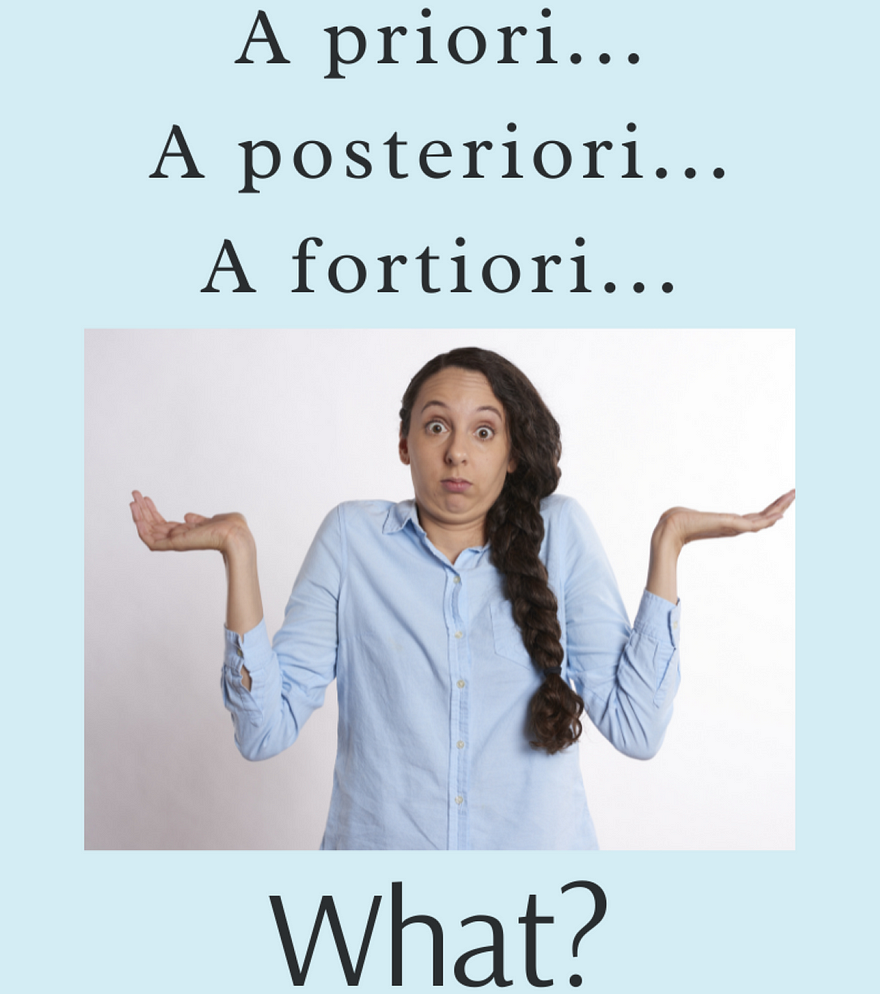Schrödinger once raised the possibility that the wave function’s “great many alternatives may not be alternatives [at all], but all really happen simultaneously”. He admitted that this idea may “seem lunatic” to “quantum theorists”. The physicist David Deutsch believes these words to be the earliest known reference to what came to be called “many worlds”.

Much that’s controversial and (as it’s often put) weird about quantum mechanics (or at least the wave function) is discussed in the following passage, which was once spoken by Erwin Schrödinger:
“Nearly every result [the quantum theorist] pronounces is about the probability of this or that or that … happening — with usually a great many alternatives. The idea that they may not be alternatives but all really happen simultaneously seems lunatic to him, just impossible. He thinks that if the laws of nature took this form for, let me say, a quarter of an hour, we should find our surroundings rapidly turning into a quagmire, or sort of a featureless jelly or plasma, all contours becoming blurred, we ourselves probably becoming jelly fish. It is strange that he should believe this. For I understand he grants that unobserved nature does behave this way — namely according to the wave equation. The aforesaid alternatives come into play only when we make an observation — which need, of course, not be a scientific observation. Still it would seem that, according to the quantum theorist, nature is prevented from rapid jellification only by our perceiving or observing it … it is a strange decision.”
The physicist Erwin Schrödinger (1887-1961) stated these words in 1952, in a lecture he gave in Dublin. At one point in that lecture he said (to his audience) that his words may “seem lunatic”. One wonders, then, if he felt the same way at the height of the “first quantum revolution” (i.e., from the mid-1920s to the 1930s). Or was this a purely retrospective view?
More relevantly, the British physicist David Deutsch (for one) believes the passage above to be the earliest known reference to what came to be called the “many worlds” (see ‘Many-worlds interpretation’) of the wave function.
The Wave Function’s Contradictory Alternatives
Now let’s break the passage above down a little.
Schrödinger told us that
“[n]early every result [the quantum theorist] pronounces is about the probability of this or that or that [] happening — with usually a great many alternatives”.
Schrödinger then offers us his own interpretation of this. He continued by saying that all these probabilities
“may not be alternatives [,] but all really happen simultaneously”.
Well, according to the wave function, they actually do (or simply may) all happen simultaneously…
Or do they?
It depends.
The best way to characterise what Schrödinger meant by the words “great many alternatives” is by citing his own well-known cat experiment. Of course this is a thought experiment about a “classical” object — a cat! The two alternatives here are: cat alive/cat dead. In this thought experiment, then, both alternatives occur at one and the same time.
Here’s the relevant story.
We can make sense of all this by bringing in another universe. That is, if we bring in another universe, then one cat is alive in that universe and another cat (its counterpart) is dead in our own Universe (or vice versa). So when the box is opened, we find only a dead cat. That box-opening is equivalent to an observation (or the collapse) of the wave function.
And, of course, from the very beginning, Schrödinger believed that this collapse is (as it were) weirder that his his own possibility of alternatives happening simultaneously.
Thus, on Schrödinger’s “lunatic” version, the wave function isn’t collapsed at all (or it’s characterised before any collapse). Instead, one cat is both dead and alive…
So why not argue that there’s a dead cat in our universe and alive cat (its counterpart) in another universe?
It must be stressed here that Schrödinger certainly didn’t put any of this in that way. He simply raised the possibility that all these alternatives can happen simultaneously (i.e., if seen in accordance with the wave function). And this, by inference, must be true of all the quantum (or micro) alternatives (i.e., not cats, but particles, etc.) which are part of each wave function.
This issue here can be summed up by saying that such probabilities (or ‘probability amplitudes’) are effectively concretised (or reified) by quantum theorists. Or perhaps it can be said that the wave function itself concretises all (as it were) its probabilities.
So it can basically — as well as accurately — be said that with the (or a) wave function, there are actually many (to use Schrödinger’s words again) “alternatives happening simultaneously”. Thus, such weirdness is entirely a product of the wave function itself.
Do such alternatives simultaneously occur without the (mathematical) wave function?
Of course not.
Indeed, that question hardly makes sense.
We simply don’t know anything about these alternatives (or much else at the quantum level) without the wave function (as well as other mathematics). Thus, in a strong sense, such alternatives (whether happening separately or simultaneously) don’t so much as exist (or have any reality) without the wave function. Indeed, we have no right to speak of “reality” at all in separation of the mathematics.
[Wave functions were used well before the quantum wave function and Schrödinger’s equation.]
So it’s not a surprise that many quantum theorists — and others — have actually questioned the notion of what is called reality. More accurately, what is usually said is something like the following:
Without the mathematics, observations, tests, experiments, etc., there is no reality.
Yet without the wave function itself, there are no observations, experiments, tests, etc. in the first place (at least not ones which can be made scientific sense of).
Schrödinger was, of course, talking about the possibility of all these probabilities (or alternatives) happening simultaneously. Yet most quantum theorists don’t think in terms of all these alternatives existing together in physical reality. It’s the wave function itself which (as it were) makes it seem that way.
Yet in accordance with at least the Copenhagen interpretation, the quantum theorist has no right to say that these many alternatives do not all occur together. That is, if a theorist can’t say anything about an unobserved realm (or a realm beyond the wave equation), then what right has he to say that it can’t be the case that such alternatives all occur together? After all, the wave function is (as it were) telling him that they do all happen together. Thus, in order to demonstrate that they aren’t happening simultaneously, a quantum theorist would need to move beyond the wave function and the maths generally.
But how could he do that?
The Collapse of the Wave Function
Schrödinger pointed out something which has now become commonplace. He stated that there’s nothing in the wave function itself about collapse. Indeed, it was Niels Bohr (and then others) who used this idea to explain why we only find a single (to use Schrödinger’s word again) “alternative” at the end of an experiment, not a quantum superposition of alternatives (or states). What’s more, in a paper published in 1952, Schrödinger went even further when he stated that it’s “patently absurd” that the wave function should
“be controlled in two entirely different ways, at times by the wave equation, but occasionally by direct interference of the observer, not controlled by the wave equation”.
To explain.
The option the quantum theorist has it to (as it’s often put) collapse the wave function. And only then the possibility (or reality) of so many contradictory alternatives existing together is no longer a problem. That is, the collapse (as it were) brings to an end to all these alternatives existing together…
Except that this issue isn’t really solved - at least not philosophically.
That’s simply because we’ve moved from one situation (i.e., the wave function before its collapse) to another situation (i.e., the actual collapse of the wave function). Thus, one situation being non-problematic doesn’t render the prior situation non-problematic. In this case, then, there wouldn’t even be a collapse of the wave function if there wasn’t a previous wave function which (as it were) needed to be collapsed. Thus, you can’t have the non-problematic collapse without the prior problematic wave function (i.e., as it was before the collapse).
All this can be said to make the collapse of the wave function itself as problematic as Schrodinger’s many alternatives happening simultaneously. Indeed, on this reading, the collapse is even more problematic (or weird) than the prior wave function before it was collapsed!
Contradiction and Collapse
To recap.
Schrödinger appeared to suggest (or simply state!) that quantum theorists (at least the ones he was referring to) have wrapped themselves up in some kind of contradiction.
On the one hand, the quantum theorist Schrödinger referred to “grants that unobserved nature does behave this way”. On the other hand, the theorist also believes that “[t]he idea that they may not be alternatives but all really happen simultaneously seems lunatic to him”. Indeed, Schrödinger’s quantum theorist believed that this is “just impossible”!
Yet this is what the wave function tells us.
So does that mean that the wave function itself must be both lunatic and just impossible?
To continue with this story.
Firstly, we have multiple alternatives happening simultaneously. Then the
“aforesaid alternatives come into play only when we make an observation — which need, of course, not be a scientific observation”.
So one of those multiple alternatives comes into play. That is, the wave function is collapsed and what is left is a single one of the previous multiple alternatives. Indeed, it’s collapsed only when “we make an observation”. (Schrödinger states that the observation “need [] not be a scientific observation”.) Thus, what Schrödinger calls “nature” was behaving a certain way, and then it suddenly stops behaving in that certain way when an observation is made.
All this means that Schrödinger appears to have made a metaphysically realist claim (see ‘Metaphysical realism’). He claimed that nature was a certain way before any act of observation. Thus, on this reading at least, you couldn’t get any more realist (see ‘Philosophical realism’) than that. Granted, it’s essentially the wave function (or “what it says”) which is real. Yet the wave function is, after all, supposed to be telling is something about nature. And in that nature there are (or were) multiple (mutually contradictory) alternatives happening simultaneously! [See note at the end of this piece.]
Here it must be said (again) that the the collapse of the wave function is as weird (or even weirder) than the wave function (or what it tells us) itself — at least if we accept this account. After all, the wave function is a certain way, and then a mere observation stops it from being that certain way.
Thus, can we now conclude that a (mere) observation effectively changes reality?
Many Worlds and Jellification
This whole issue is rendered more complicated by Schrodinger’s use of the word “jellification”.
Is this Schrodinger’s hint that he also had a problem with the wave function as it was before any collapse? After all, Schrödinger did say that
“according to the quantum theorist, nature is prevented from rapid jellification only by our perceiving or observing it”.
What did Schrödinger mean by the word “jellification”?
Firstly, the multiple alternatives in the wave function instantiate (or will at least lead to) jellification. That is,
“if the laws of nature took this form for, let me say, a quarter of an hour, we should find our surroundings rapidly turning into a quagmire, or sort of a featureless jelly or plasma, all contours becoming blurred, we ourselves probably becoming jelly fish”.
In other words, the wave function’s alternatives would proliferate indefinitely if not collapsed (or observed). And because there would be so many alternative jostling for the little space which the particular wave function captures, then we’d end up with (after a “quarter of an hour”) a “quagmire” (or “featureless jelly”) of all the many alternatives coalescing together. And that would be (or is) largely because there’s no extra (abstract) room for them to do anything else.
And Schrödinger believed that all this is (to use his own word) “strange” (if not weird).
More importantly, Schrödinger appeared to accept the possible reality (or existence) of the multiple alternatives happening simultaneously. On the other hand, he was certainly unhappy with what’s supposed to happen due to an observation.
Does this mean that Schrödinger accepted the existence of what later came to be called “many worlds” (at least as they existed in this limited and restricted form)? In addition, did Schrodinger believe in these many worlds because, again, he also believed that the collapse (along with the emphasis on observation) is strange?
So is the existence of many worlds (as expressed by the wave function) actually less weird than the collapse of the wave function?
As Schrödinger argued, the wave function (as it were) allows a multitude of contradictory alternatives. What’s more, these alternatives could (or do) increase indefinitely — leading to jellification. And this is a problem certainly noted by many critics of many-worlds theory in more recent decades (see here).
This can also mean that (in a sense) the wave function must be collapsed in order to stop such jellification. Or, less strongly, the quantum theorist (or quantum experimenter) must collapse the wave function in order to make everything more amenable to scientific scrutiny. However, that wouldn’t mean that there was no prior jellification (or that multiple alternatives didn’t happen simultaneously). It simply means that the quantum theorist can’t do anything with such a strange reality. Thus, in a sense, the collapse of the wave function is simply a pragmatic act.
Thus, perhaps the collapse of the wave function isn’t faithful to reality at all. What’s more, many quantum theorists claim that the wave function isn’t even meant to be faithful to reality!
Conclusion
Schrödinger never mentioned many worlds.
However, in order for many contradictory alternatives to happen simultaneously (such as a single particle being spin up and spin down at one and the same time, or being in place x and place y at one and the same time, etc.), then surely placing such things in different worlds will iron out such a contradictory (or “impossible”) reality. That is, even though the possibility of many worlds itself may itself seem bizarre to many people, it doesn’t (or at least it may not) actually involve any contradictions.
Finally, no one paid any attention to Schrödinger’s many-worlds possibility.
Perhaps that’s largely because he himself said it was “lunatic” and admitted that it seemed “impossible”. (At least it seemed that way to what Schrödinger called the “quantum theorist”.) Of course, Hugh Everett (1930–1982) took this idea up, though not necessarily because of anything Schrödinger said in 1952. Everett also introduced the idea of the Universe “splitting” into different versions of itself, which Schrödinger himself never referred to.
************************************
Note: Reality and Pythagorean Physics
The literature has it that there’s something more — and before — the wave function: the quantum state. (More correctly, the quantum state of an isolated system.) The wave function is a mathematical description of that state.
In addition, the word “representation” is often used in quantum mechanics and for the wave function. That is, a given set of observables is represented. The wave function represents that quantum state.
All that, in a certain sense, must be obvious in that it can’t all be about the mathematics…
Or can it?
That’s unless one is a Pythagorean. A Pythagorean would say that even the observables are purely mathematical in nature. That’s primarily because observation in these quantum contexts is nothing like, say, observing the cat next door or even observing a neuron (or brain cell) under a microscope.
On the other hand, surely where there’s a representation, then there must also be something which is represented.
Some quantum theorists — including Erwin Schrödinger himself (along with David Bohm, Hugh Everett, etc.) — believed that the wave function must have a physical (or “objective”) existence. More famously, Albert Einstein believed that a complete description of reality should refer directly to a physical time and space. The wave function itself, on the other hand, is often said to refer only to an abstract mathematical (as well as Pythagorean?) space.
To come at this from a slightly different angle which brings in, specifically, Schrödinger’s equation
Firstly, there’s the wave function, and only then do physicists use Schrödinger’s equation. More relevantly, this mathematical equation describes the wave function. Yet that wave function (or even the wave simpliciter) is itself mathematical (i.e., it’s a mathematical function). It’s also often seen as being exclusively about what physicists — and others — call “information”.
So, in a strong sense, maths is describing maths. Or, less strongly, one part of maths is effectively describing another part of maths.
In addition, the word “description” is often used to explain what both the wave function and Schrödinger’s wave equation do. So it’s not as if the wave function simply is what it is, and only then does Schrödinger’s wave equation describe and/or “solve” it. Instead, something that’s already mathematically descriptive (i.e., the wave function) is then solved by something which is also mathematically descriptive (i.e., Schrödinger’s wave equation).
My flickr account.












